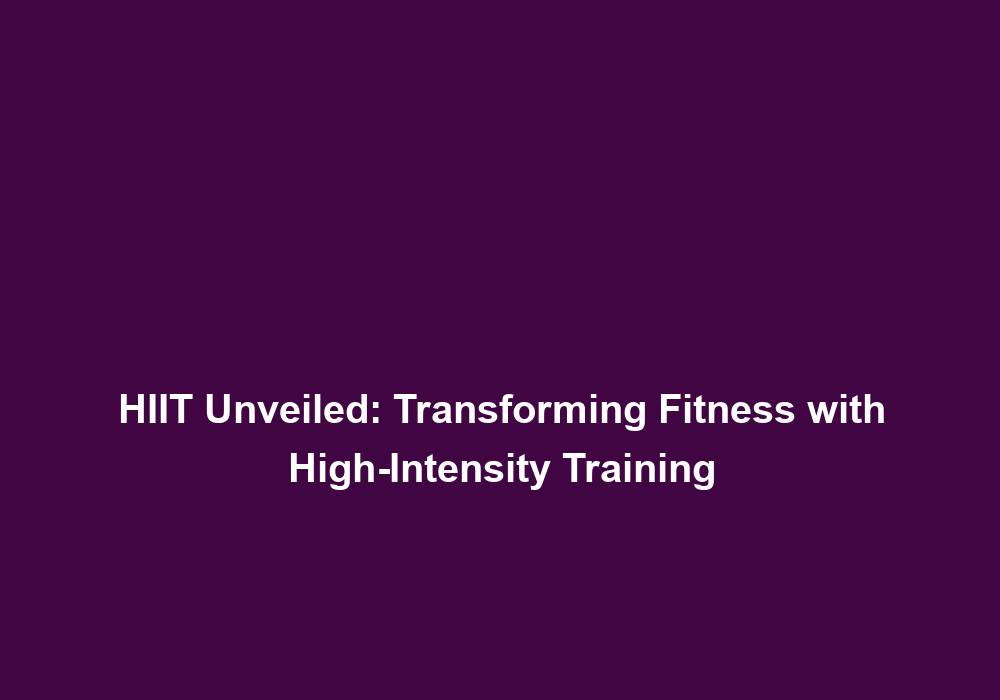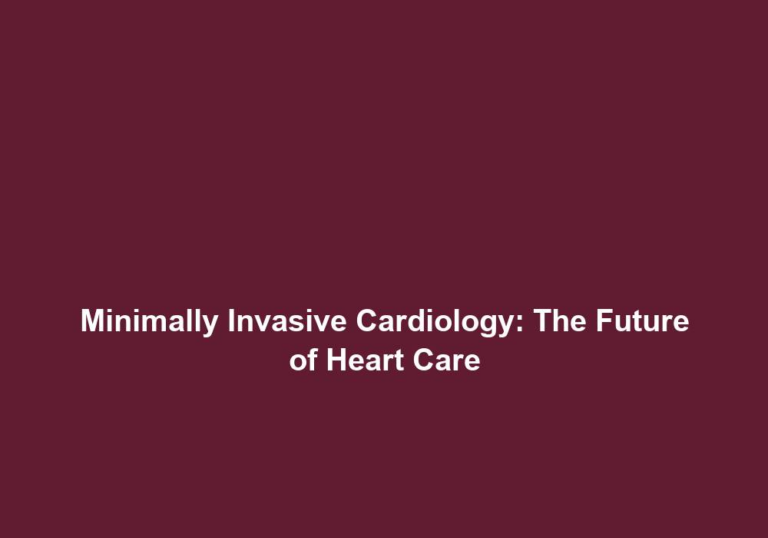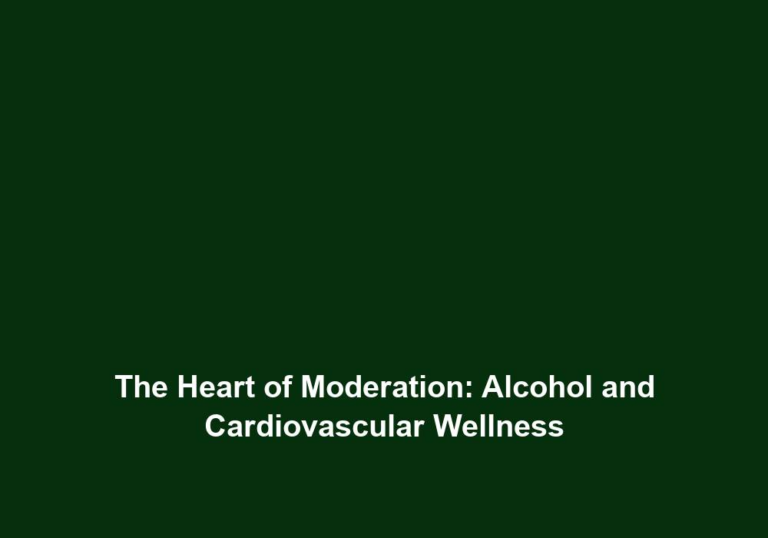HIIT Unveiled: Transforming Fitness with High-Intensity Training
High-Intensity Interval Training (HIIT) has emerged as a revolutionary fitness approach that offers a multitude of benefits for individuals looking to maximize their workout efficiency and achieve impressive results. With its unique combination of intense bursts of exercise and short recovery periods, HIIT has taken the fitness world by storm. In this article, we will delve into the world of HIIT, uncovering its advantages, explaining the science behind its effectiveness, and providing practical tips for incorporating it into your fitness routine.
Understanding the Basics of HIIT
At its core, HIIT is a form of cardiovascular exercise where high-intensity exercises are interspersed with brief recovery periods. The key principle behind this training method is to push your body to its limits during the intense intervals, followed by short rest periods to allow for recovery before repeating the cycle. This alternating pattern of intense effort and rest is what sets HIIT apart from traditional steady-state cardio workouts.
HIIT workouts typically consist of exercises such as sprints, burpees, jump squats, and mountain climbers. These exercises engage multiple muscle groups and elevate heart rate efficiently, resulting in a highly effective workout. The intense intervals usually last between 20 to 60 seconds, during which you give your all and push yourself to the limit. This is followed by active recovery periods of 10 to 30 seconds, allowing your heart rate to come down slightly before the next intense interval.
The Science Behind HIIT
The effectiveness of HIIT lies in its ability to elevate heart rate and stimulate the body’s energy systems. During the intense intervals, your heart rate skyrockets, leading to an increased demand for oxygen and energy. This triggers the body to tap into its stored energy sources, primarily fat, to fuel the intense exercise. As a result, HIIT has been shown to be an effective method for burning calories and promoting weight loss.
Additionally, HIIT induces a phenomenon known as excess post-exercise oxygen consumption (EPOC), commonly referred to as the afterburn effect. EPOC causes the body to continue burning calories at an elevated rate long after the workout session has ended. This means that even after you finish your HIIT workout, your body continues to burn calories as it works to restore itself to its pre-exercise state. This afterburn effect contributes to weight loss and improved metabolic function.
Benefits of HIIT
-
Efficient use of time: HIIT offers a time-efficient workout option, making it a popular choice for individuals with busy schedules. Since HIIT sessions typically range from 15 to 30 minutes, you can achieve substantial fitness gains in a fraction of the time compared to traditional workouts. This makes it easier to fit exercise into your daily routine.
-
Increased calorie burn: Due to its high-intensity nature and EPOC effect, HIIT has been shown to burn more calories than steady-state cardio exercises. This makes it an excellent choice for individuals aiming to lose weight or maintain a healthy body composition. In fact, studies have shown that HIIT can burn up to 30% more calories than other forms of exercise.
-
Improved cardiovascular health: HIIT improves cardiovascular fitness by challenging the heart and lungs. Regular HIIT sessions can enhance heart function, increase oxygen uptake, and lower resting heart rate, leading to improved overall cardiovascular health. This not only improves your endurance but also reduces the risk of cardiovascular diseases.
-
Muscle preservation: Unlike long-duration cardio exercises, which can lead to muscle loss over time, HIIT has been found to help preserve muscle mass. The intense bursts of exercise stimulate muscle growth and strength while targeting fat loss, resulting in a leaner and more defined physique. This is especially beneficial for individuals who want to improve their body composition and maintain a toned appearance.
-
Versatility and variety: HIIT can be tailored to suit a wide range of fitness levels and preferences. It offers variations in exercise selection, duration, and intensity, allowing individuals to customize their workouts according to their goals and fitness levels. Whether you prefer bodyweight exercises, kettlebell swings, or cycling, there is a HIIT workout that can suit your preferences and keep you motivated.
Implementing HIIT into Your Fitness Routine
To incorporate HIIT into your fitness routine effectively, consider the following tips:
-
Start gradually: If you’re new to HIIT, begin with shorter intervals and longer rest periods. As your fitness level improves, gradually increase the intensity and duration of the intense intervals while shortening the recovery periods. This allows your body to adapt to the demands of HIIT and helps prevent injury.
-
Choose exercises wisely: Select exercises that engage multiple muscle groups and elevate heart rate efficiently. Examples of HIIT exercises include burpees, squat jumps, mountain climbers, and high knees. Aim to include a mix of cardiovascular and strength-based movements to achieve a well-rounded workout. This not only improves your overall fitness but also helps you build strength and endurance.
-
Time your intervals: Aim for intense intervals ranging from 20 to 60 seconds followed by active recovery periods of 10 to 30 seconds. Experiment with different work-to-rest ratios to find the balance that works best for you. This allows you to challenge yourself during the intense intervals while still giving your body enough time to recover.
-
Incorporate variety: Avoid repetitive routines by incorporating a variety of exercises and workout formats. This not only keeps your sessions engaging but also ensures that different muscle groups are targeted and challenged. You can try circuit training, Tabata workouts, or interval runs to keep your HIIT workouts exciting and effective.
-
Prioritize safety: As with any form of exercise, it is crucial to prioritize safety during HIIT workouts. Warm up adequately before each session, maintain proper form during exercises, and listen to your body. If you experience severe pain or discomfort, modify or discontinue the exercise. Additionally, make sure to stay hydrated and take rest days to allow your body to recover and prevent overtraining.
Conclusion
HIIT has undoubtedly transformed the fitness landscape, offering a time-efficient and effective approach to achieving fitness goals. By incorporating high-intensity exercises with short recovery periods, individuals can enhance cardiovascular fitness, burn calories, and preserve muscle mass. Remember to tailor your workouts to your fitness level, choose exercises wisely, and prioritize safety. With dedication and consistency, HIIT can help you unleash your full fitness potential and experience remarkable results.







